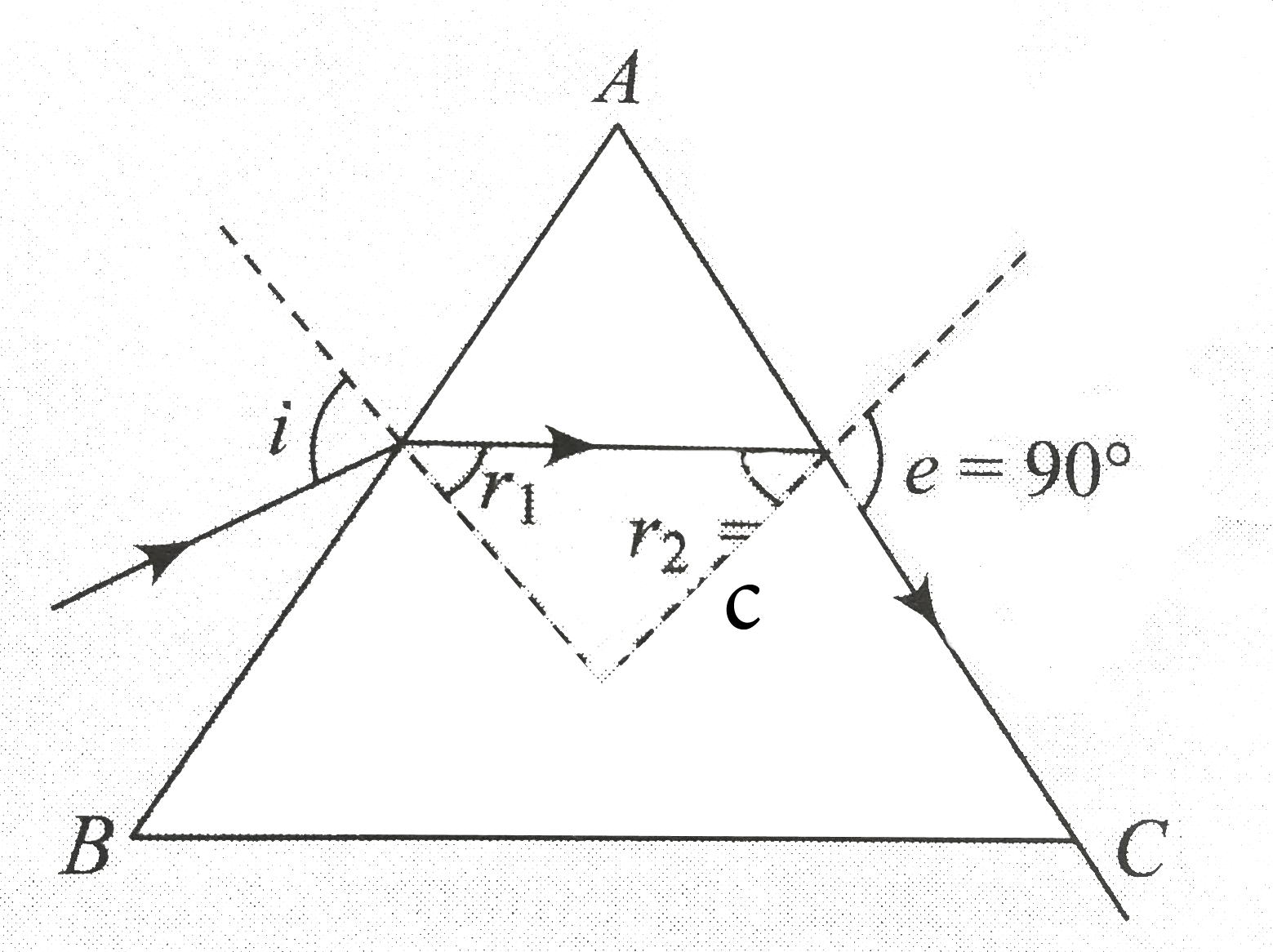The refracting angle of a prism is 60∘ and its refractive index is √73. What should be the minimum angle of incidence on the first refracting surface so that the ray can emerge somehow from the second refracting surface? Solution in Bengali
Let I be the limiting angle of incidence, then
sini=√μ2−1⋅sinA−cosA
=√73−1⋅sin60∘−cos60∘
2√3⋅√32−12=1−12=12=sin30∘
∴ I=30∘
Topper's Solved these Questions
- REFRACTION OF LIGHTBOOK - CHHAYA PUBLICATIONCHAPTER - REFRACTION OF LIGHTEXERCISE - HIGHER ORDER THINKING SKILL (HOTS QUESTION)
25 Videos
- REFRACTION OF LIGHTBOOK - CHHAYA PUBLICATIONCHAPTER - REFRACTION OF LIGHTEXERCISE - SECTION RELATED QUESTION
18 Videos
- REFLECTION OF LIGHTBOOK - CHHAYA PUBLICATIONCHAPTER - REFLECTION OF LIGHTEXERCISE - INTEGER ANSWER TYPE
3 Videos
- SEMICONDUCTORS AND ELECTRONICS BOOK - CHHAYA PUBLICATIONCHAPTER - SEMICONDUCTORS AND ELECTRONICS EXERCISE - CBSE SCANNER
31 Videos
Similar Questions
Monochromatic rays of light coming from vacuum are refracted in a medium of refractive index μ . Show that the ratio of the wavelength of the incident ray that of the refracted ray is equal to the refractive index of the medium.
View SolutionWhat is meant by refraction of light?
View SolutionThe image of an object placed at a distance of 40 cm from a convex mirror is formed at a distance of 10 cm from the mirror. If object approaches the mirror with a velocity of 32cm⋅s−1 , what will be the velocity of the image (incm⋅s−1)
View Solution(a) Describe briefly with the help of a diagram the role of the two important processes involved in the formation of a p-n junction.
View SolutionWhat should be the minimum value of refractive index of a prism, refracting angle A, so that there is no emergent ray irrespective of the angle of incidence?

View SolutionRefractive index of a prism is sqrt(7//3) and the angle of prism is 60^(@) . The minimum angle of incidence of a ray that will be transmitted through the prism is
View SolutionThe angles of refraction of a very thin prism is 1∘. A light say is incident normally on one of the refracting surface. The ray that ultimately emerges from the first surface, after suffering from the second surface. Makes an angle of 3.32∘ with the normal. the deviation of the ray emerging from the second surface and the refractive index of the material of the prism respectivley, are
View SolutionA prism of refractive index √2 has refractive angle 60∘ . Find the angle of incidence so that a ray minimum deviation.
View SolutionA ray of light is incident on a refracting face of glass prism of refracting angle 30^@ . If the ray emerges normally from the second refracting surface, the angle of incidence is refracting surface, the angle of incidence is [""_(a)mu_(g) = 1.5]
View SolutionA ray of light is incident normally on one of the refracting surfaces of prism of refracting angle 60^@ . The emergent ray grazes the other refracting surface. The refractive index of the material of the prism is
View SolutionThe refractive index of a prism having refracting angle 75^(@) is sqrt2 . What should be the minimum angle of incidence on a refracting surface so that the ray will emerge from the other refracting surface of the prism?
View SolutionThe refractive index of a prism is √2 and its refractive angle is 60∘ . If a ray emerge with the minimum angle of deviation then the angle of incidence will be
View SolutionA ray of light is emerged from a prism of refracting angle 70∘ . If the angle of refraction in the first refracting surface is 28∘ , what is the angle of incidence at the second face?
View SolutionThe refracting angle of a prism is 60^(@) and the refractive index of its material is sqrt((7)/(3)). Find the minimum angle of incidence of a ray of light falling on one refracting face of the prism such that the emerging ray will graze the other refracting face.
View SolutionThere is a prism with refractive index equal to √2 and the refracting angle equal to 60∘. One of the refracting surfaces of the prism is polished. A beam of monochromatic light will retrace its path if its angle of incidence over the refracting surface of the prism is
View Solution
